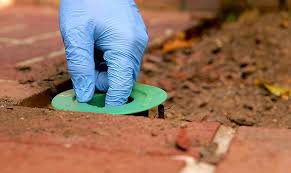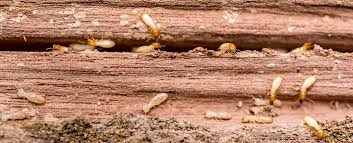
The smart Trick of Termite Control Pipe System That Nobody is Discussing
The soldier caste has anatomical and behavioural specialisations, and their only real aim is to defend the colony. Many soldiers have big heads with highly altered strong jaws so enlarged they cannot feed themselves. Instead, like juveniles, they are fed by employees.5556 Fontanelles, simple holes in the forehead that exude defensive secretionsare a feature of the family Rhinotermitidae.57 Many species have been easily identified using the qualities of the soldiers' bigger and darker head and massive mandibles.53 Among certain termites, soldiers can utilize their globular (phragmotic) heads to obstruct their narrow tunnels.58 Different types of soldiers include minor and significant soldiers, and nasutes, that have a horn-like nozzle frontal projection (a nasus).53 These unique soldiers are able to spray noxious, sticky secretions containing diterpenes at their enemies.59 Nitrogen fixation has an important part in nasute nutrition.60.
The reproductive caste of a mature colony includes a fertile female and male, known as the queen and king.61 The queen of this colony is responsible for egg production for the colony. Unlike in ants, the king mates with her life.62 In certain species, the abdomen of this queen swells up radically to increase fecundity, a feature known as physogastrism.61 Depending on the species, the queen begins producing reproductive winged alates at a certain time of year, and enormous swarms emerge in the colony when nuptial flight begins.
A young termite nymph. Nymphs first moult into workers, but others may farther moult to become soldiers alates.
Some Known Factual Statements About Termite Control Pipe System
Termites are often compared with all the social Hymenoptera (ants and various species of bees and wasps), but their differing evolutionary origins result in significant differences in life cycle. In the eusocial Hymenoptera, the employees are entirely female. Males (drones) are haploid and develop from unfertilised eggs, while females (both workers and the queen) are both diploid and develop from fertilised eggs.
Depending on species, both male and female workers may have different roles in a termite colony.63.
The life cycle of a termite begins with an egg, but is different from that of a bee or ant in that it goes through a developmental process called incomplete metamorphosis, with egg, nymph and adult phases.64 Nymphs resemble small adults, and go through a series hop over to here of moults as they develop.
Excitement About Termite Control Powder
The development of nymphs into adults can take months; the time period depends on food availability, temperature, and the general population of this colony. Since nymphs are unable to feed themselves, employees must feed thembut employees also take part in the social life of their colony and also have certain different tasks to achieve like foraging, site web building or maintaining the nest or tending to the queen.5367 Pheromones govern the caste system in termite colonies, preventing all but a very few of the termites from becoming fertile queens.68.

Termite alates only leave the colony when a nuptial flight takes place. Alate men and females pair up together and then land in search of a suitable place for a colony.70 A termite king and queen do not mate until they find such a spot. When they dothey excavate a room big enough for both, close up the entrance and move to partner.70 After mating, the set never go outside and spend the remainder of their lives in the nest.
Examine This Report about Termite Control Pipe System
For instance, alates in certain species appear during the day in summer while others emerge during the winter.71 The nuptial flight might also begin at dusk, when the alates swarm around regions with lots of lights. The time when nuptial flight begins depends on the environmental conditions, the time of day, moisture, wind speed and precipitation.71 The number of termites in a colony also fluctuates, with the larger species normally having 1001,000 individuals.
The queen only lays 1020 eggs in the very early stages of the colony, but places as many as 1,000 a day when the colony is a few years old.53 At Discover More Here maturity, a main queen has a fantastic capacity to lay eggs. In certain species, the adult queen has a greatly distended abdomen and may produce 40,000 eggs per day.72 The two mature ovaries may have some 2,000 ovarioles each.73 The abdomen increases the queen's body length to several times more than before mating and reduces her ability to maneuver freely; attendant workers provide assistance.